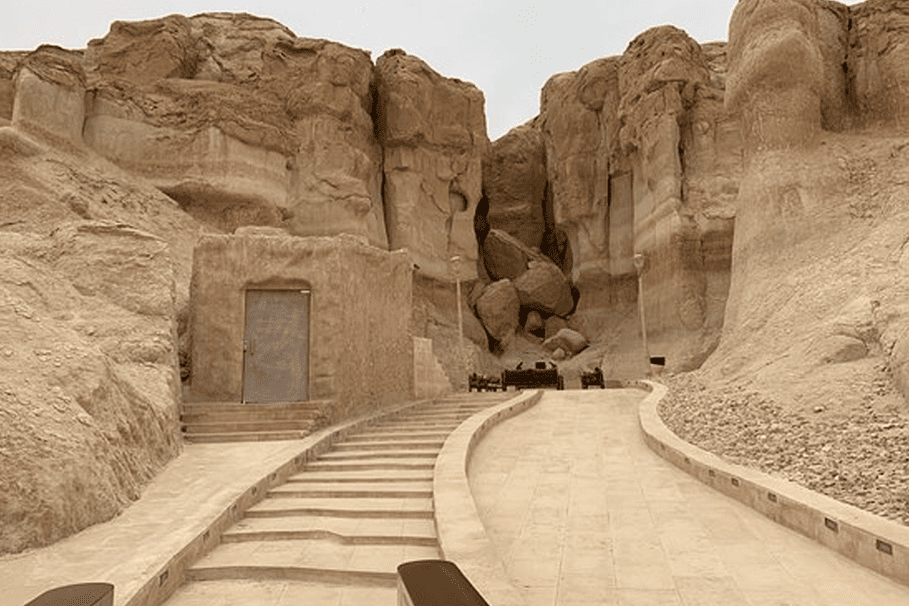

Pic Courtesy : Alike
Al Qara Hill stands as a magnificent testament to nature’s artistry. This captivating destination offers visitors an enchanting blend of stunning landscapes and rich geological features. From its dramatic cliffs to hidden caves, every corner reveals a new adventure waiting to be explored.
As we embark on this photo journey through Al Qara Hill, prepare to be mesmerized by the unique beauty it has to offer. Whether you’re an avid photographer or simply someone who appreciates breathtaking scenery, Al Qara Hill is sure to leave you in awe. Let’s dive into what makes this remarkable landmark a must-visit for nature lovers and history enthusiasts alike.
Exploring the Stunning Landscapes of Al Qara Hill: A Photo Journey
Al Qara Hill presents a breathtaking panorama that draws visitors from around the globe. Its lush greenery contrasts starkly with rugged cliffs, creating a mesmerizing visual experience. The undulating terrain invites exploration and offers countless photography opportunities.
The varying elevations of Al Qara reveal captivating vistas at every turn. Sunrises illuminate the landscape in vibrant colors, while sunsets cast a magical glow over the hills. Each moment spent here is like stepping into an artist’s masterpiece.
Nature lovers will find joy in discovering unique flora and fauna that thrive in this environment. Every visit to Al Qara Hill promises new sights and experiences, making it an unforgettable destination for all who venture there.
Naming
Al Qara Hill, known locally as Jebel Al Qara, is a remarkable natural landmark. Its name reflects the geographical and cultural significance of the region. “Qara” translates to “dark,” often referencing the hill’s distinctive shadow cast by its rocky formations.
The naming also highlights local legends and historical anecdotes tied to this unique site. The area has been inhabited for centuries, with stories passed down through generations.
Visitors are drawn not only by its beauty but also by the rich tapestry of history interwoven in its name. Exploring Al Qara Hill offers an opportunity to connect with both nature and ancient traditions that continue to resonate today.
Geographical Location
Al Qara Hill is located in the eastern region of Saudi Arabia, near the town of Al Ahsa. This area is known for its rich cultural heritage and breathtaking landscapes. The hill stands as a natural wonder that draws visitors from both local and international backgrounds.
Rising majestically from the surrounding plains, Al Qara Hill offers stunning panoramic views of the lush oasis below. Its strategic location makes it easily accessible to tourists seeking adventure or tranquility amidst nature’s beauty.
The proximity to urban centers enriches its appeal, making Al Qara Hill not only a geological marvel but also an integral part of regional tourism development initiatives.
Geology
Al Qara Hill is a geological marvel, featuring stunning rock formations that tell stories of ancient landscapes. The hill’s structure primarily consists of limestone, shaped by millions of years of natural processes. This sedimentary rock was formed from marine organisms compressing sediments over time.
Erosion has played a significant role in sculpting the hill’s unique features. Wind and water have carved out intricate patterns, leaving behind striking cliffs and valleys. These formations are not only visually captivating but also provide insights into Earth’s history.
The rich geological diversity makes Al Qara Hill an essential site for geologists and nature lovers alike. Each layer reveals secrets about past climates and ecosystems, enhancing its allure as a destination for exploration.
Caves and Cavities
Al Qara Hill is renowned for its fascinating caves and cavities, which draw adventurers and nature lovers alike. These natural formations are carved into the landscape, creating a unique environment to explore.
The caves vary in size and shape, some reaching impressive depths while others present narrow passages that intrigue visitors. Each cave offers an opportunity to discover distinct rock formations and stunning natural artistry.
These hidden gems serve not only as geological wonders but also provide shelter for various species of wildlife. Exploring these caverns reveals the intricate relationship between nature’s beauty and its inhabitants within this captivating region.
Formation of Caves
The formation of caves in Al Qara Hill is a fascinating natural process. It primarily occurs through the erosion of limestone by acidic water over thousands of years. Rainwater absorbs carbon dioxide from the atmosphere and soil, forming a weak acid that seeps into crevices.
As this acidic water flows through the rock, it gradually dissolves minerals, enlarging existing fractures and creating cavities. This slow but persistent action leads to the development of intricate cave systems.
Eventually, these cavities can evolve into expansive chambers adorned with stunning stalactites and stalagmites. The unique geological processes at play here contribute to Al Qara Hill’s enchanting allure for visitors and researchers alike.
Renovation and Tourism Investment Works
Recent efforts to renovate Al Qara Hill have transformed it into a prime tourist destination. The local government has invested significant resources to enhance accessibility and visitor experience.
New pathways, viewing platforms, and informative signage have been established. These improvements allow guests to navigate the stunning landscapes more easily while learning about the natural history of the area.
Additionally, partnerships with tour operators aim to promote eco-tourism and cultural experiences. This initiative encourages visitors to explore not just the landscapes but also the rich heritage surrounding Al Qara Hill. As tourism flourishes, so does community engagement and economic growth in this breathtaking region.
Climate
Al Qara Hill experiences a hot desert climate, typical of the region. Summer temperatures can soar above 40°C (104°F), making it crucial for visitors to stay hydrated and protected from the sun’s harsh rays.
Winter brings milder conditions, with daytime temperatures averaging around 20°C (68°F). Nights can be cool, dropping close to freezing in some areas. This variation provides a unique opportunity to experience two distinct environments within one destination.
Rainfall is minimal and occurs sporadically throughout the year, primarily during winter months. These brief showers contribute to the area’s stunning landscapes but do not significantly impact overall aridity. The dry climate shapes both flora and fauna found here.
History
Al Qara Hill has a rich history that dates back thousands of years. It is believed to have been inhabited since prehistoric times, evidenced by ancient artifacts discovered in the area. These findings highlight its significance as a dwelling place for early civilizations.
The hill served as a strategic location due to its elevated position, offering natural protection and visibility. Throughout history, it witnessed various cultures and tribes passing through or settling nearby, each leaving their mark on the landscape.
Today, Al Qara Hill stands not only as a geological wonder but also as a testament to human resilience and adaptation over centuries. Its historical depth adds an intriguing layer for visitors exploring this breathtaking site.
Education
Education plays a vital role in promoting Al Qara Hill as a significant natural landmark. Local schools and institutions incorporate the hill into their curriculum, showcasing its geological wonders and historical importance. Field trips to this stunning location allow students to explore firsthand its diverse ecosystems.
Moreover, educational programs are being developed for tourists, offering guided tours that detail the unique geology and biology of the area. This initiative not only fosters appreciation for Al Qara Hill but also encourages conservation efforts among visitors. By bridging knowledge with experience, education enhances our understanding of this remarkable site while fostering pride in local heritage.
